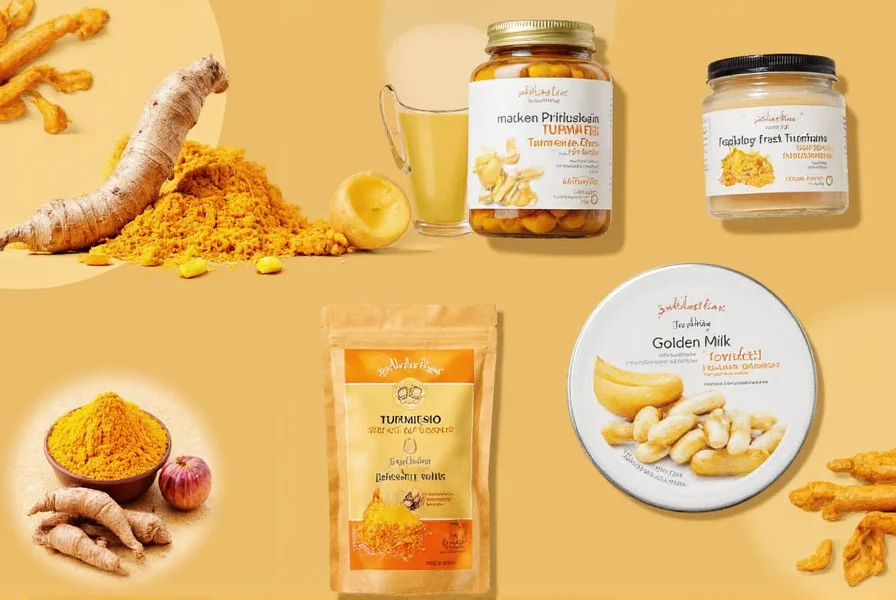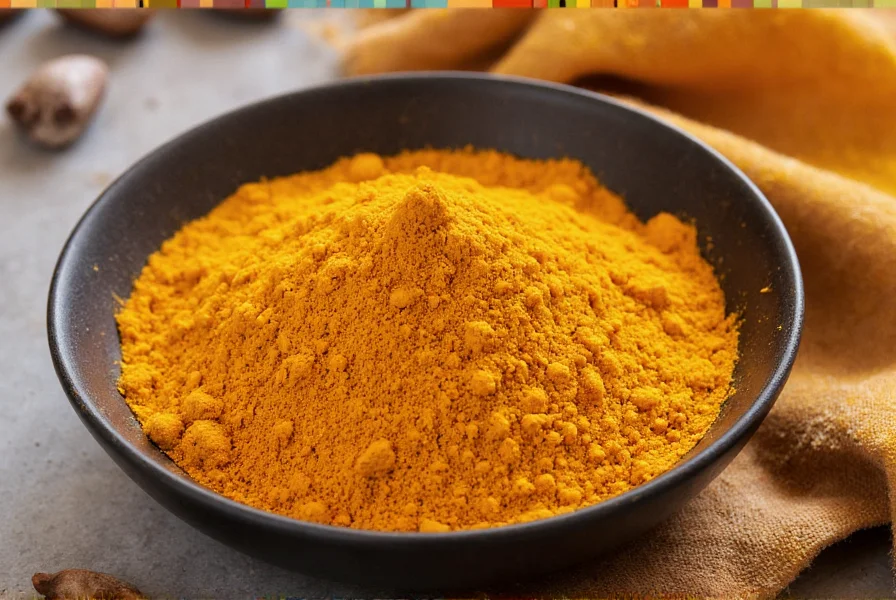
Understanding Turmeric: More Than Just a Spice
Turmeric has been a staple in global kitchens and traditional medicine systems for over 4,000 years. This golden spice, native to Southeast Asia and India, belongs to the ginger family and gets its distinctive color from curcuminoids, with curcumin being the most active component. When exploring what is the spice turmeric used for, we must distinguish between its well-documented culinary applications and the scientifically studied potential health benefits.
Culinary Applications of Turmeric
Chefs and home cooks worldwide rely on turmeric for both flavor and color. Its earthy, slightly bitter taste with warm, peppery notes makes it indispensable in numerous dishes:
- Curry powders and pastes – Turmeric forms the golden base of most curry blends
- Rice and grain dishes – Adds color and subtle flavor to pilafs and biryanis
- Mustards and sauces – Provides the characteristic yellow color
- Vegetable dishes – Complements roasted or sautéed vegetables
- Golden milk – A popular beverage combining turmeric with warm milk and spices
Professional chefs often toast turmeric powder before use to enhance its flavor profile. When using fresh turmeric root, they recommend wearing gloves to prevent staining. Understanding how is turmeric used in cooking reveals why it's considered essential in many global cuisines.
Traditional Medicinal Uses Across Cultures
Ayurvedic and Traditional Chinese Medicine systems have incorporated turmeric for millennia. Practitioners historically used it for:
| Traditional System | Common Applications |
|---|---|
| Ayurveda | Digestive aid, wound healing, anti-inflammatory agent |
| Traditional Chinese Medicine | Blood circulation improvement, pain relief |
| Ancient Greek Medicine | Treatment for skin conditions and digestive issues |
| Unani Medicine | Respiratory support and liver health |
These traditional applications represent centuries of observational knowledge, though modern science continues to investigate which uses have empirical support. When examining what are the traditional uses of turmeric spice, it's important to recognize these practices developed before modern scientific validation methods existed.
Modern Research on Potential Health Benefits
Contemporary scientific research has focused extensively on curcumin, turmeric's primary active compound. Studies suggest potential benefits, though more research is needed to confirm many applications:
- Inflammation management – Curcumin may help reduce inflammation markers, potentially benefiting those with arthritis
- Antioxidant properties – May combat oxidative stress in the body
- Digestive support – Some evidence suggests it may stimulate bile production
- Skin health – Topical applications studied for various skin conditions
It's crucial to understand that while promising, many of these potential benefits require more extensive human trials. The National Center for Complementary and Integrative Health notes that curcumin has poor bioavailability on its own, which is why many supplements combine it with black pepper extract (piperine) to enhance absorption. When considering is turmeric good for inflammation, current evidence suggests modest benefits but not as a replacement for prescribed treatments.

Practical Ways to Incorporate Turmeric
Adding turmeric to your daily routine can be simple and delicious. Here's how to maximize both flavor and potential benefits:
- Golden milk – Heat milk (dairy or plant-based) with 1 tsp turmeric, a pinch of black pepper, and honey
- Smoothie booster – Add 1/4 tsp turmeric powder to fruit smoothies
- Rice enhancement – Stir 1/2 tsp into rice water before cooking
- Dressings and dips – Mix with olive oil, lemon juice, and garlic for a vibrant dressing
- Roasted vegetables – Toss with turmeric, olive oil, and salt before roasting
For those wondering how to use turmeric in daily diet effectively, remember that combining it with healthy fats (like olive oil or avocado) and black pepper significantly enhances curcumin absorption. Most culinary experts recommend starting with small amounts as its flavor can be strong for new users.
Safety Considerations and Limitations
While turmeric is generally safe as a food spice, certain considerations apply:
- Medication interactions – May interact with blood thinners and diabetes medications
- Digestive sensitivity – Large amounts may cause stomach upset in some individuals
- Pregnancy – Culinary amounts are safe, but high-dose supplements should be avoided
- Gallbladder issues – May worsen symptoms in people with gallstones
The FDA classifies turmeric as Generally Recognized As Safe (GRAS) when used as a food ingredient. However, therapeutic doses found in supplements should be discussed with healthcare providers, especially for those with existing health conditions or taking medications. It's essential to maintain realistic expectations about what health benefits does turmeric have—it's a complementary option, not a replacement for medical treatment.
Conclusion: Turmeric's Enduring Value
Turmeric's journey from ancient spice markets to modern research laboratories demonstrates its enduring value. As a culinary ingredient, its uses are well-established and versatile across global cuisines. Regarding potential health applications, while research continues to evolve, current evidence supports modest benefits particularly related to inflammation management. When incorporating turmeric into your lifestyle, focus on culinary applications for flavor and color, and consult healthcare professionals before using high-dose supplements for specific health concerns. Understanding what is the spice turmeric used for requires appreciating both its historical significance and contemporary scientific perspective.
Frequently Asked Questions
What are the primary culinary uses of turmeric spice?
Turmeric is primarily used as a coloring agent and flavor base in curry powders, rice dishes, mustards, and sauces. It adds a distinctive golden hue and earthy, slightly bitter flavor to foods. Professional chefs often use it in marinades, soups, and roasted vegetable preparations across Indian, Southeast Asian, and Middle Eastern cuisines.
Does turmeric have scientifically proven health benefits?
Research shows turmeric's active compound curcumin has anti-inflammatory and antioxidant properties. Some studies suggest benefits for arthritis symptoms and digestive health, but evidence is not conclusive for most health claims. The National Institutes of Health notes that while promising, more extensive human trials are needed. Turmeric should complement, not replace, conventional medical treatments.
How much turmeric should I consume daily for potential health benefits?
For culinary use, 1/4 to 1 teaspoon of turmeric powder daily is common and safe. For potential health benefits, studies often use 500-2,000 mg of curcumin daily, but this typically requires supplements. Since curcumin has low bioavailability, it's often combined with black pepper. Consult a healthcare provider before starting high-dose supplementation.
Can I use fresh turmeric instead of powdered turmeric?
Yes, fresh turmeric root can be used as an alternative to powder. One inch of fresh turmeric root roughly equals 1 teaspoon of powdered turmeric. Fresh turmeric has a more vibrant, ginger-like flavor and can be grated into smoothies, juices, or sauces. Store fresh turmeric in the refrigerator for up to two weeks or freeze for longer storage.
Why is black pepper often combined with turmeric?
Black pepper contains piperine, which can increase curcumin absorption by up to 2,000%. This is why many turmeric supplements include black pepper extract. In culinary applications, adding a pinch of black pepper to turmeric-containing dishes enhances the potential bioavailability of curcumin, making it more effective for those seeking its potential health benefits.











 浙公网安备
33010002000092号
浙公网安备
33010002000092号 浙B2-20120091-4
浙B2-20120091-4